Abstract
The nitrate reductase of Escherichia coli K-12 was localized in a particulate fraction of the cell and it sedimented as if it were bound to a large substructure that is subject to fragmentation during cell disruption procedures. Soluble enzyme, exhibiting a homogenous profile in sucrose gradients, was released from this fraction by an alkaline-heat treatment. Less than 1.5% of total active nitrate reductase apparently occurred in this soluble form during the course of formation of the particulate enzyme. Enzyme synthesis was repressed by aeration in the presence or absence of nitrate. Under anaerobic conditions, nitrate reductase was synthesized at a rate that could be increased 20-fold by the addition of nitrate. When enzyme synthesis was initiated by induction with nitrate or anaerobiosis, biphasic kinetics were obtained. We interpreted the results as evidence for the existence of a redox-sensitive repressor which mediates nitrate reductase regulation.
Full text
PDF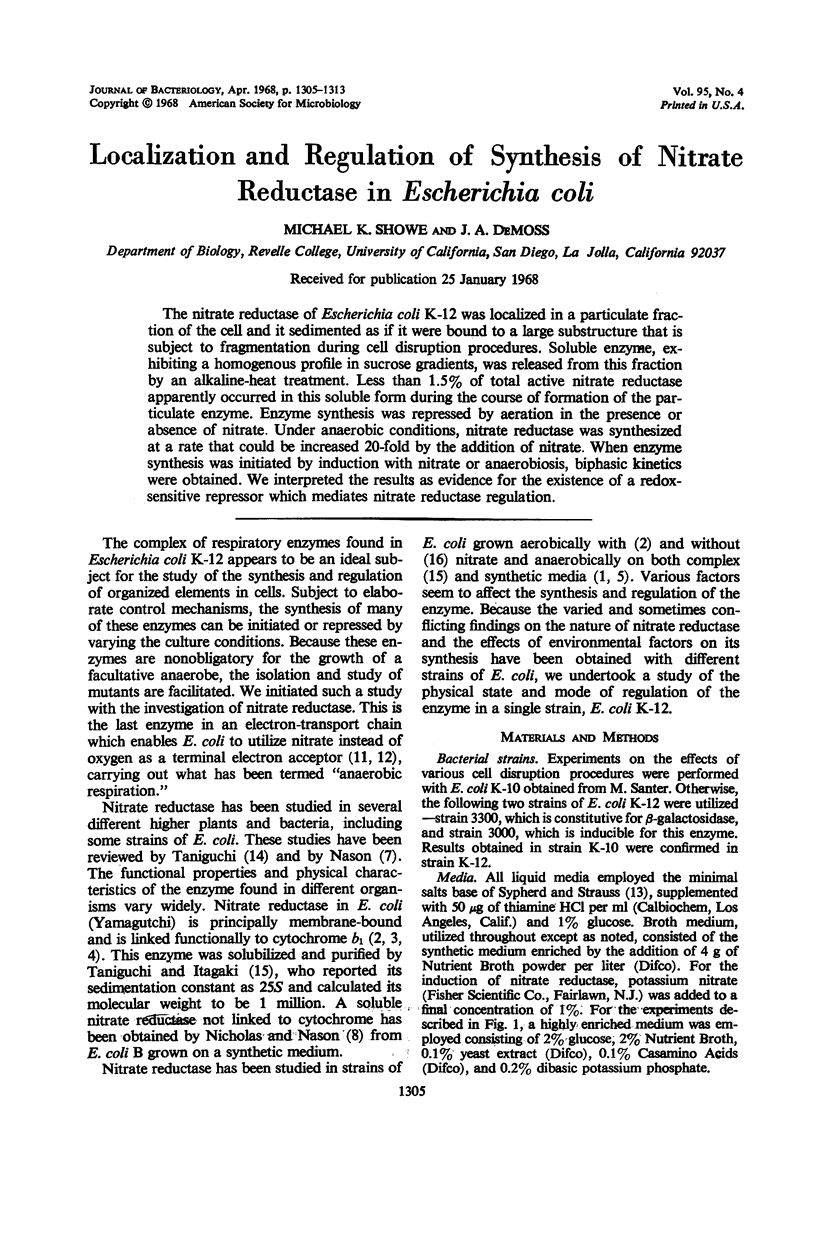
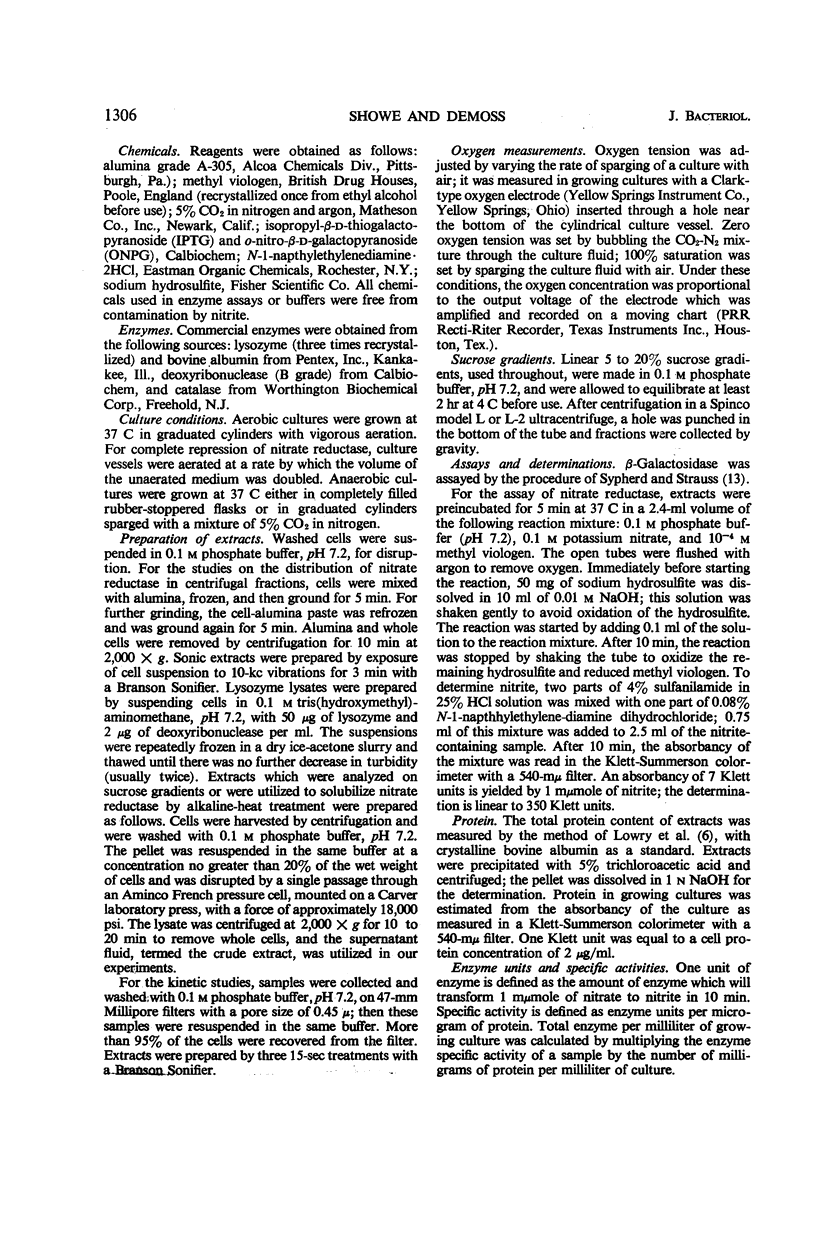
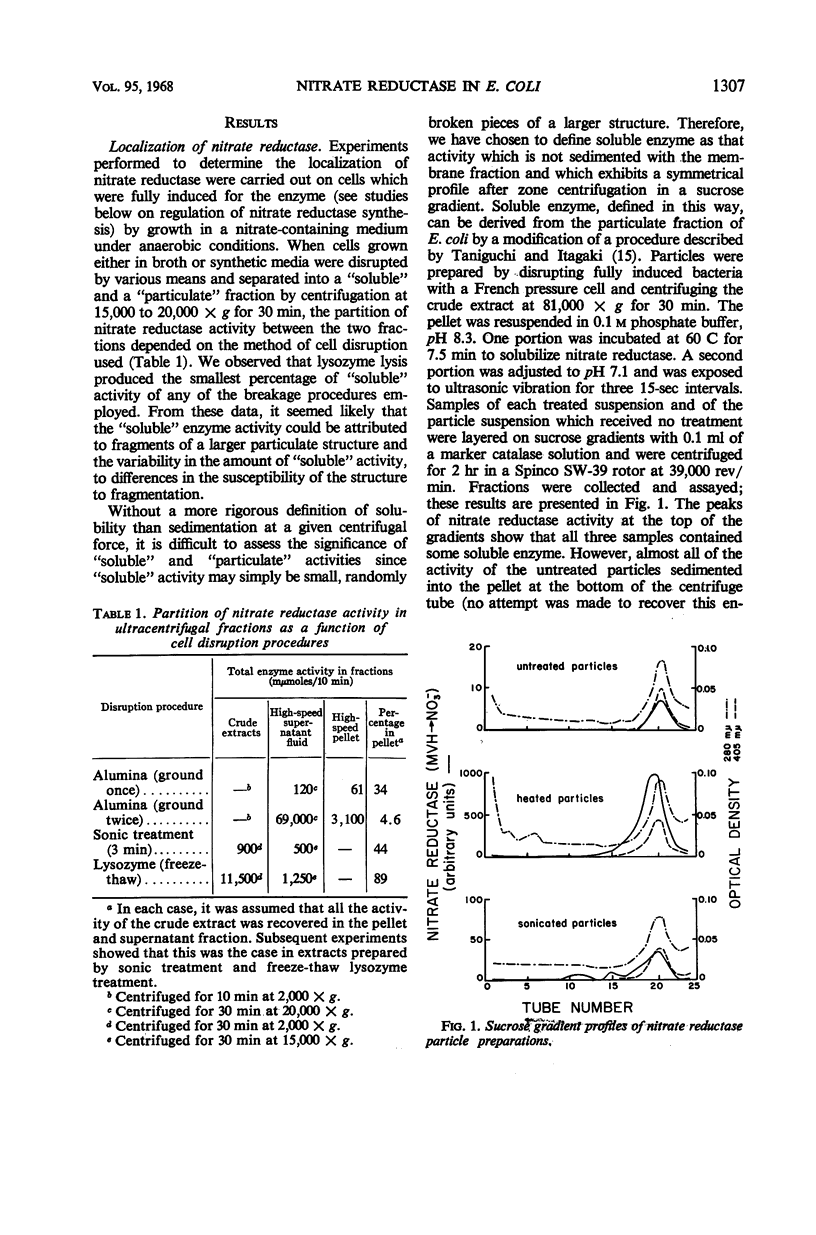
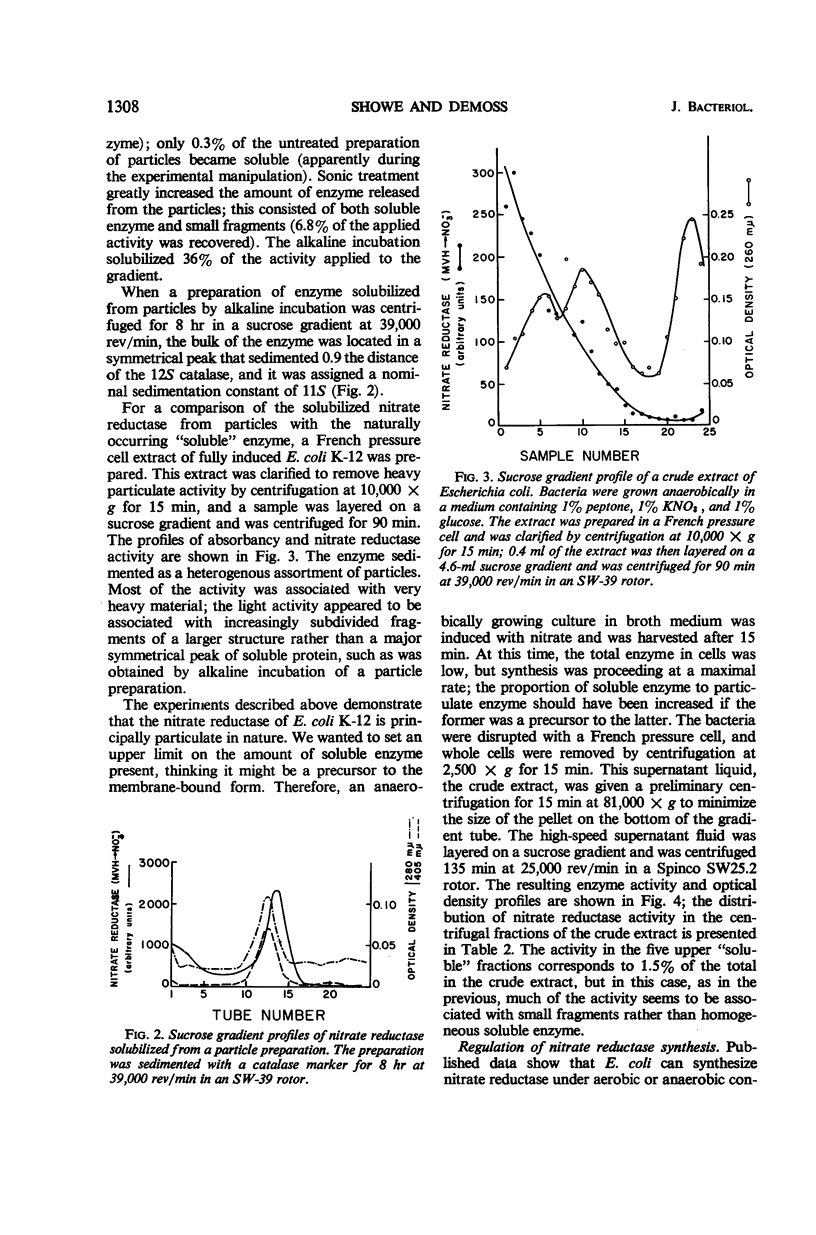
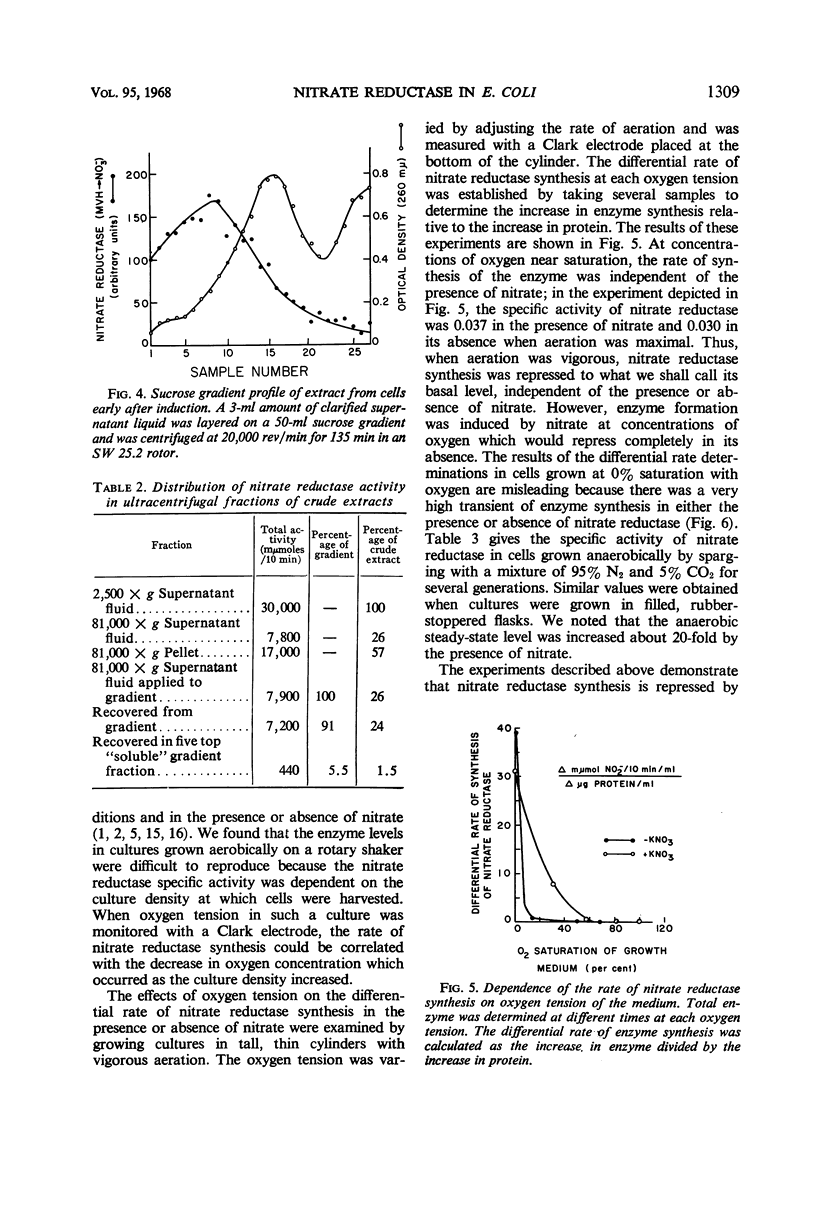
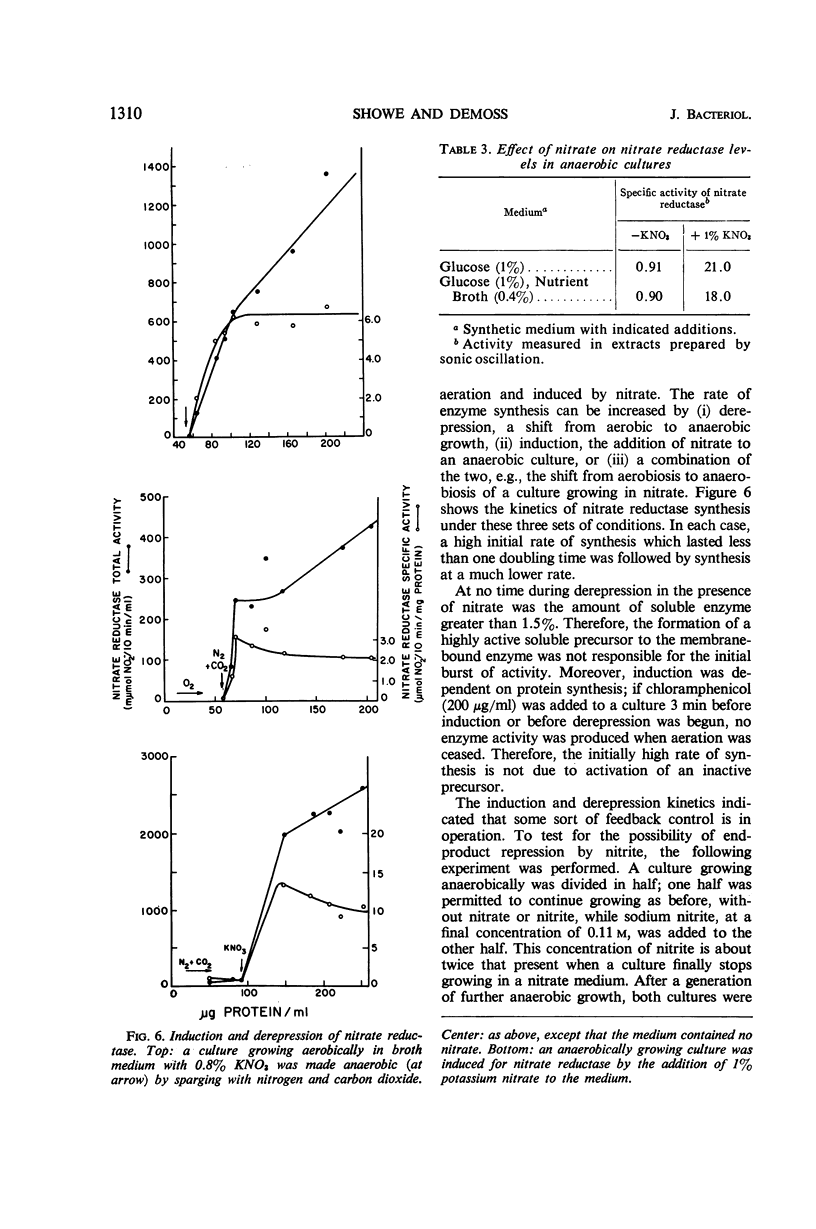
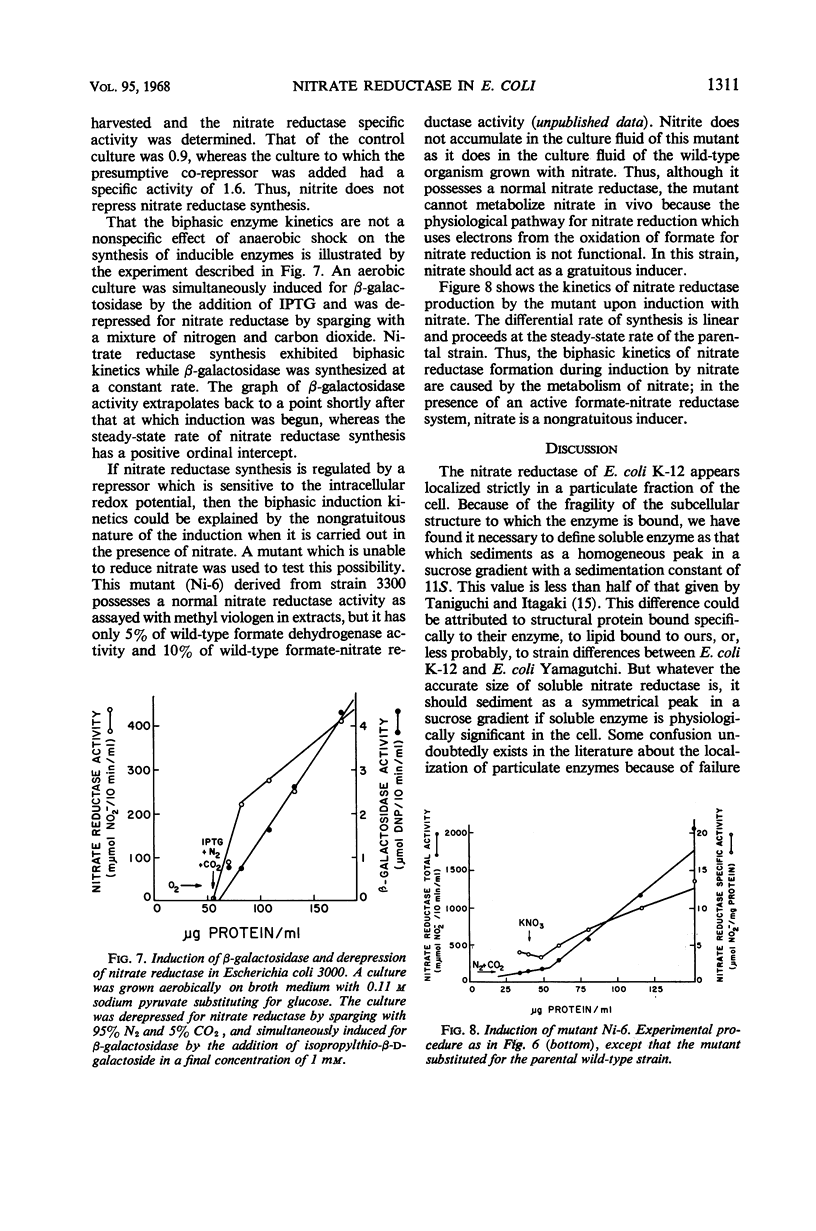
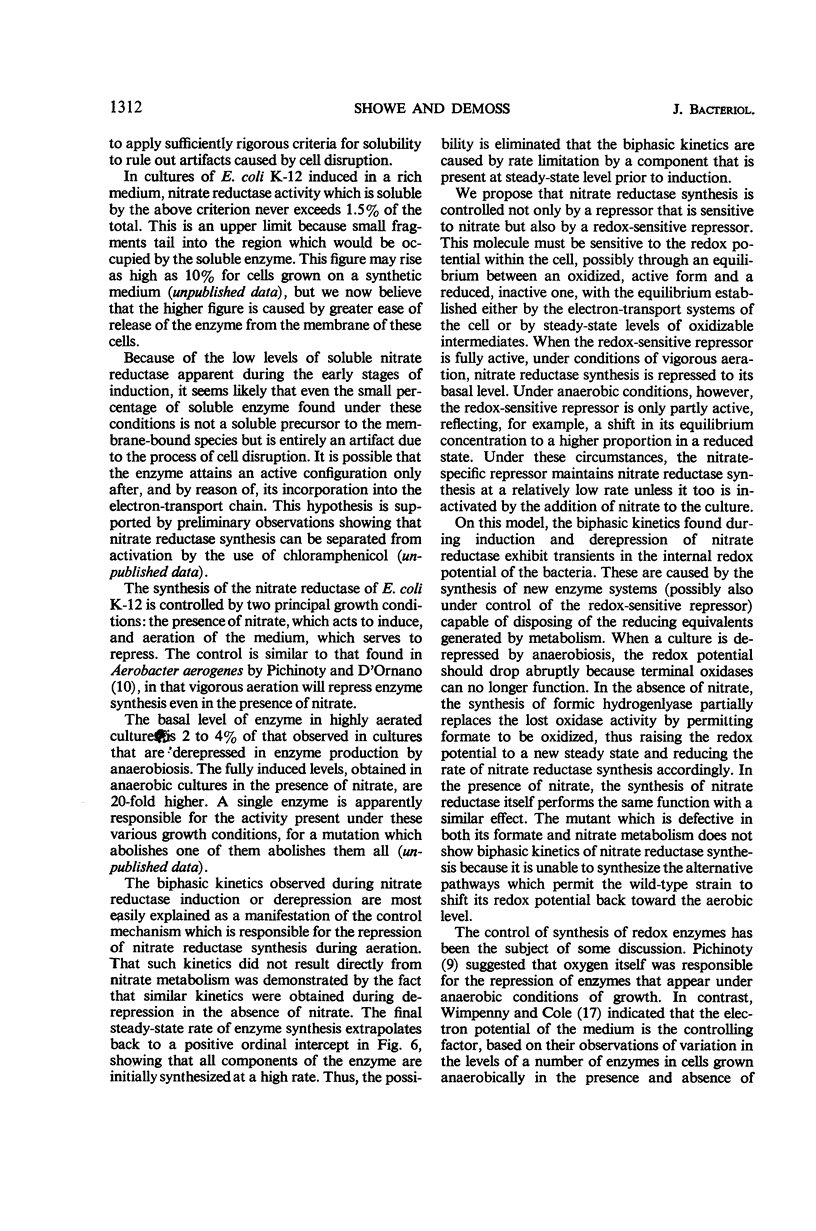
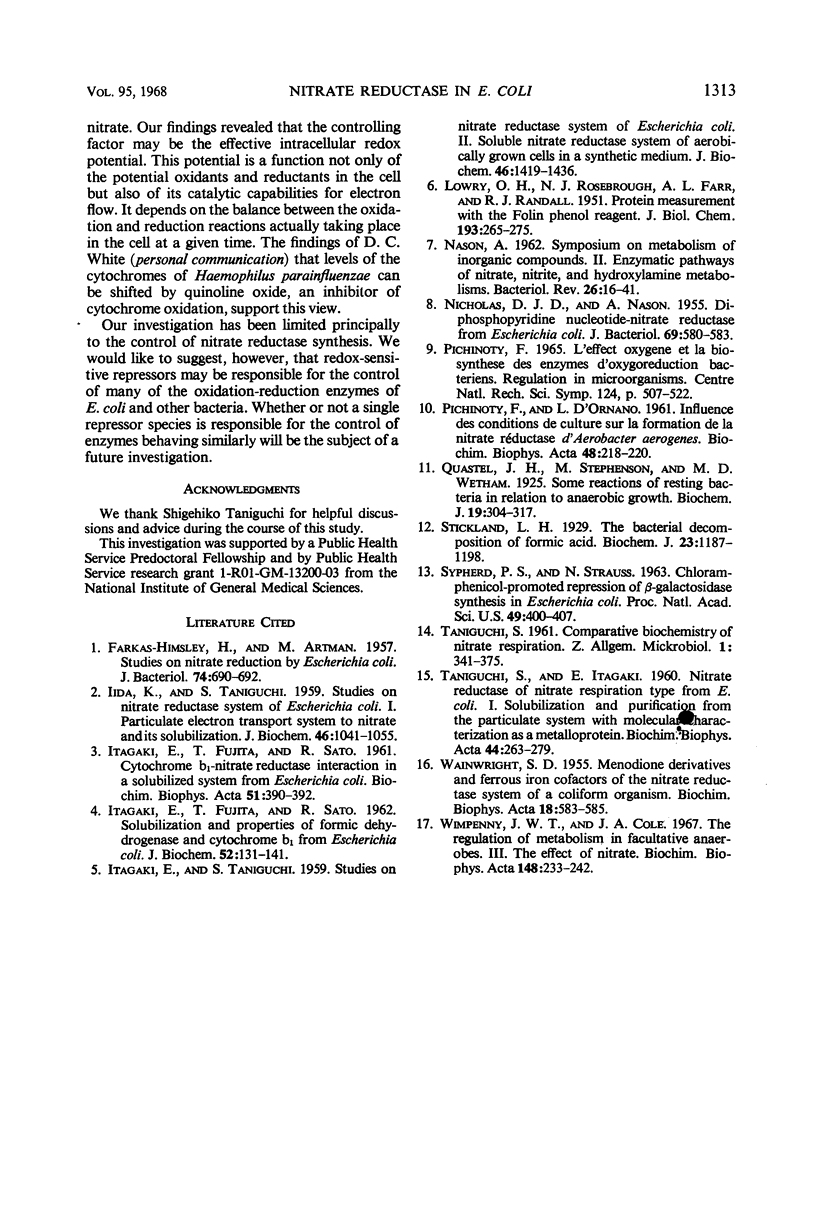
Selected References
These references are in PubMed. This may not be the complete list of references from this article.
- FARKAS-HIMSLEY H., ARTMAN M. Studies on nitrate reduction by Escherichia coli. J Bacteriol. 1957 Nov;74(5):690–692. doi: 10.1128/jb.74.5.690-692.1957. [DOI] [PMC free article] [PubMed] [Google Scholar]
- LOWRY O. H., ROSEBROUGH N. J., FARR A. L., RANDALL R. J. Protein measurement with the Folin phenol reagent. J Biol Chem. 1951 Nov;193(1):265–275. [PubMed] [Google Scholar]
- NASON A. Symposium on metabolism of inorganic compounds. II. Enzymatic pathways of nitrate, nitrite, and hydroxylamine metabolisms. Bacteriol Rev. 1962 Mar;26:16–41. doi: 10.1128/br.26.1.16-41.1962. [DOI] [PMC free article] [PubMed] [Google Scholar]
- NICHOLAS D. J., NASON A. Diphosphopyridine nucleotide-nitrate reductase from Escherichia coli. J Bacteriol. 1955 May;69(5):580–583. doi: 10.1128/jb.69.5.580-583.1955. [DOI] [PMC free article] [PubMed] [Google Scholar]
- PICHINOTY F., d' ORNANO [Influence of the culture conditions on the formation of nitrate reductase of Aerobacter aerogenes]. Biochim Biophys Acta. 1961 Mar 18;48:218–220. doi: 10.1016/0006-3002(61)90783-1. [DOI] [PubMed] [Google Scholar]
- Quastel J. H., Stephenson M., Whetham M. D. Some Reactions of Resting Bacteria in Relation to Anaerobic Growth. Biochem J. 1925;19(2):304–317. doi: 10.1042/bj0190304. [DOI] [PMC free article] [PubMed] [Google Scholar]
- Stickland L. H. The bacterial decomposition of formic acid. Biochem J. 1929;23(6):1187–1198. doi: 10.1042/bj0231187. [DOI] [PMC free article] [PubMed] [Google Scholar]
- Sypherd P. S., Strauss N. CHLORAMPHENICOL-PROMOTED REPRESSION OF beta-GALACTOSIDASE SYNTHESIS IN ESCHERICHIA COLI. Proc Natl Acad Sci U S A. 1963 Mar;49(3):400–407. doi: 10.1073/pnas.49.3.400. [DOI] [PMC free article] [PubMed] [Google Scholar]
- TANIGUCHI S., ITAGAKI E. Nitrate reductase of nitrate respiration type from E. coli. I. Solubilization and purification from the particulate system with molecular characterization as a metalloprotein. Biochim Biophys Acta. 1960 Nov 4;44:263–279. doi: 10.1016/0006-3002(60)91562-6. [DOI] [PubMed] [Google Scholar]
- WAINWRIGHT S. D. Menadione derivatives and ferrous iron as cofactors of the nitrate reductase system of a coliform organism. Biochim Biophys Acta. 1955 Dec;18(4):583–585. doi: 10.1016/0006-3002(55)90162-1. [DOI] [PubMed] [Google Scholar]
- Wimpenny J. W., Cole J. A. The regulation of metabolism in facultative bacteria. 3. The effect of nitrate. Biochim Biophys Acta. 1967 Oct 9;148(1):233–242. doi: 10.1016/0304-4165(67)90298-x. [DOI] [PubMed] [Google Scholar]


